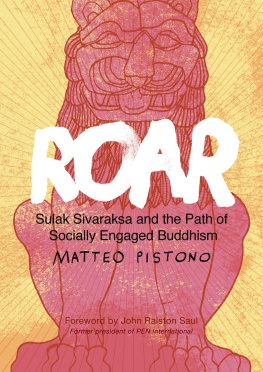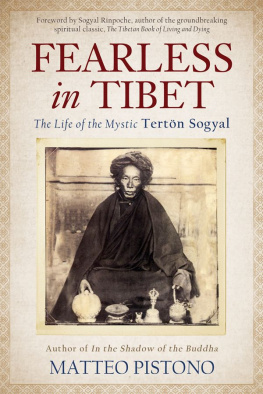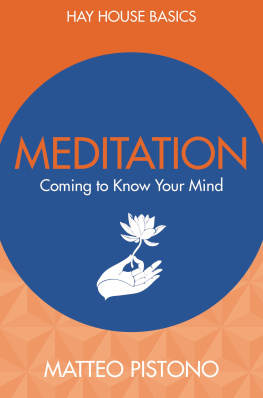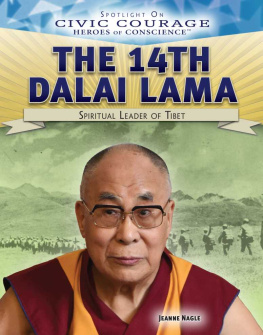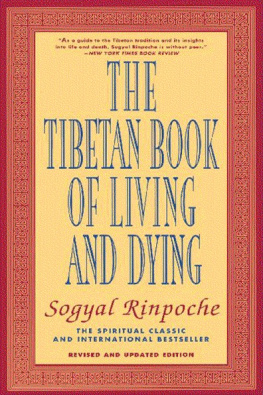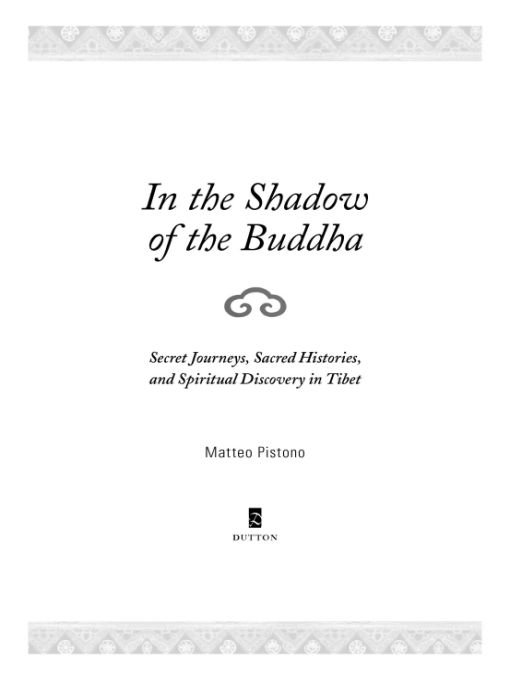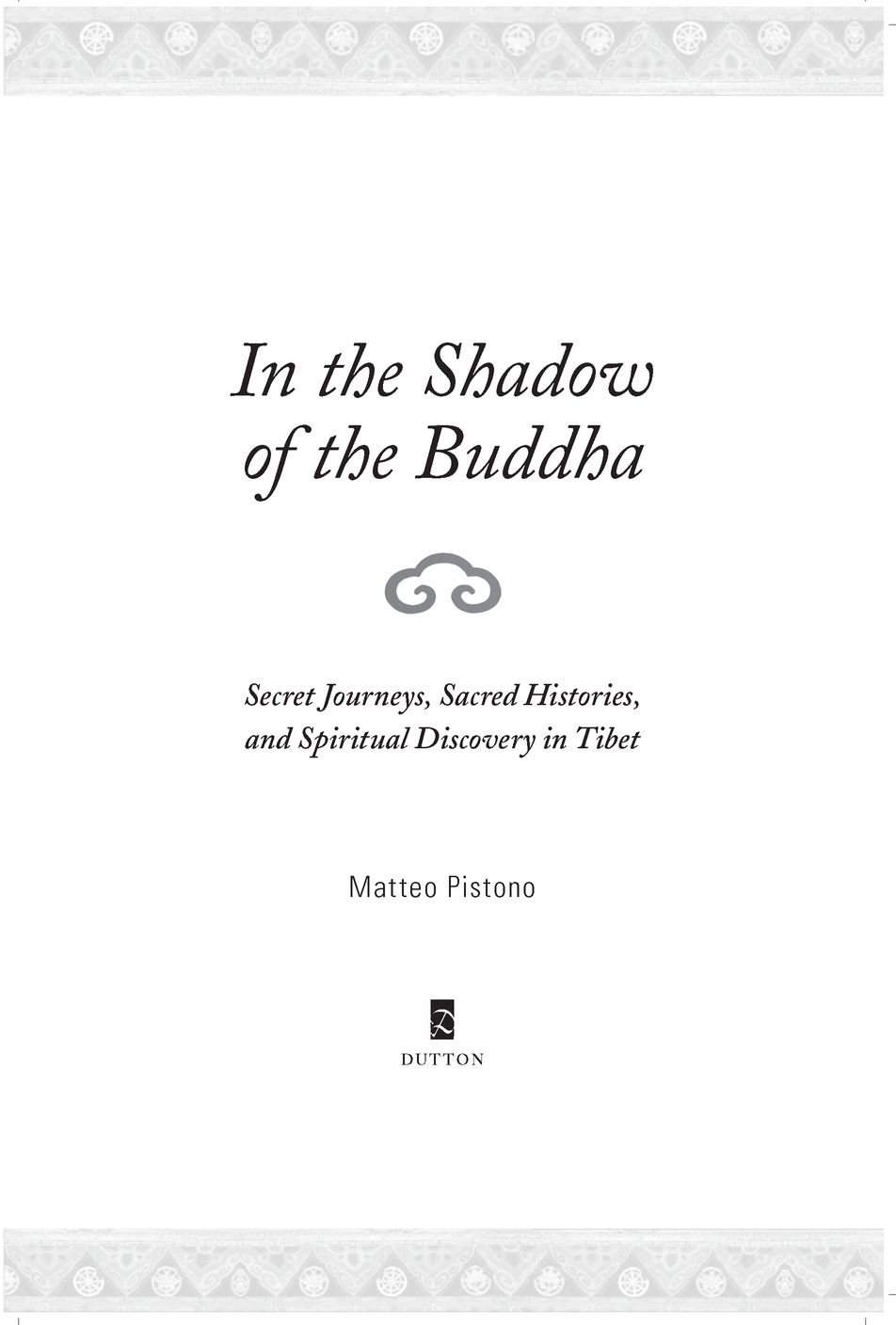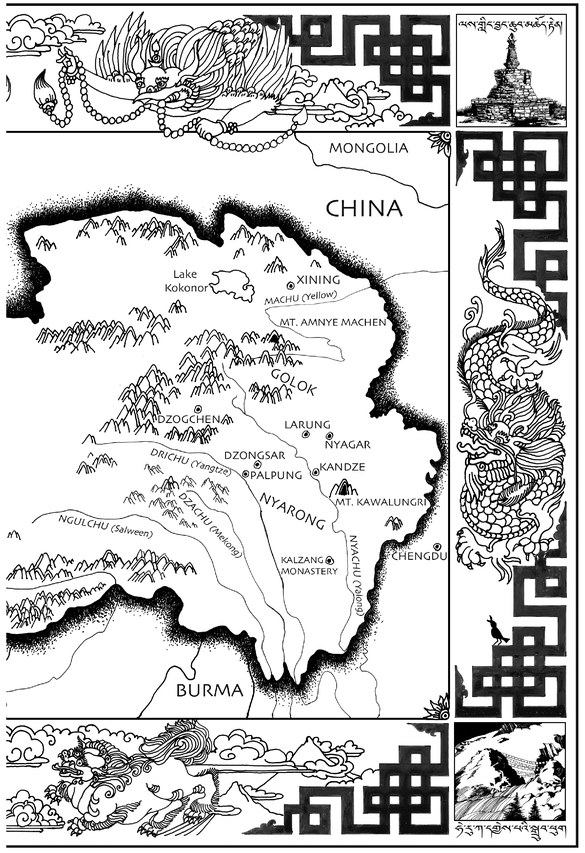Table of Contents
The book is dedicated to the fulfillment of the visions and aspirations of Tertn Sogyal Lerab Lingpa (1856-1926) for Namkhai Lhamo
Foreword
For more than a decade, Matteo Pistono has lived in Nepal and Tibet, and worked in the fields of human rights and religious freedom. He knows the territory well, and it shows in both the grit and scope of his narrative. In the many years and many places that Ive known him, from India to Washington, Matteo has remained an informed, reliable, skillful, and joyously energized individual. He is a true student of Buddhism, and has had the great fortune of having received significant teachings from some of the worlds greatest teachers, including His Holiness the Dalai Lama, Sogyal Rinpoche, and the late Khenpo Jikm Phuntsok inside Tibeta rarity indeed.
The book you hold in your hands is the story of how great spiritual practitioners from Tibet, like the mystic Tertn Sogyal, and the thirteenth and fourteenth Dalai Lamas, are able to bring the full force of the bodhisattva commitmentthe burning desire to free all beings from sufferinginto whatever situation they face, including the world of politics. The experiences Matteo writes about in this context are often esoteric, but never less than deeply human. He speaks to us of the vital importance of a complete commitment to nonviolence and of an insistence, as Gandhi used to say, on the truththe profound truth of interdependence and selflessnessas the only doors that can lead us and others to genuine happiness. For Matteo, the world of politics only has meaning when motivated by a selfless compassion, at which point politics and social action can themselves become a powerful spiritual practice.
In the Shadow of the Buddha is a fascinating journey to the Tibet of the present and of the past, which at times is both heartbreaking and inspiring, as the people Matteo writes about demonstrate what courage and commitment to truth are really about when you are motivated by a vast sense of responsibility to all beingsbe they friend or enemy. So if you want to venture beyond the Himalayas to glimpse a sacred world that is almost lost, or whether your interests lead you to the halls of political power, or to finding your path in the Western Dharma world, I trust this book will give you a deeper appreciation of the ancient wisdom tradition of Tibet and how vitally relevant it is to us todayin your heart, your community, or in the world at large.
Richard Gere
Buddhas work for the benefit of others,
Ordinary people work for the benefit of themselves,
And just look at the difference between them.
Shantideva, seventh century
Note: The author collaborated with Tibetans, Chinese, and Westerners to obtain documents, interviews, and photographs of the Peoples Republic of Chinas human rights violations and suppression of religious freedom in Tibet. None of the individuals with whom the author collaborated in obtaining this evidence continue to reside in Tibet or China. Some places, names, and dates have been changed in this book to protect the identity of those whom might otherwise come to harm.
Part I
A pilgrimage through wild, open lands provides visions that help shape the proper attitude and inner awareness for religious practice.
THE XIV DALAI LAMA OF TIBET
Chapter 1
The Mission Begins
When I first journeyed to Tibet in 1999, I was on a pilgrimage in the footsteps of a nineteenth-century Tibetan mystic named Tertn Sogyal. A horse-riding bandit turned meditation master, Tertn Sogyal eventually became the teacher of the XIII Dalai Lama, the predecessor to the current Dalai Lama. Such was the prevailing belief that Tertn Sogyals mantras and prayers could protect Tibet from foreign armies that the Dalai Lama summoned him to Lhasa to serve the nation. Not unlike the Dalai Lama today, Tertn Sogyal was a master at integrating his political duties with spiritual practice, while never losing the pure motivation that holds others well-being as the priority.
I first learned of Tertn Sogyal in 1996 when I met his reincarnation, Sogyal Rinpoche. I was in graduate school in London studying Indian philosophy. I was drawn to Tertn Sogyals life story because I know politics matter. My parents had instilled in me an awareness that social action is not so much a choice as a responsibilityto ourselves and to our community. There was something in Tertn Sogyalthe way that he pursued the path of spiritual enlightenment even while in the unsavory theater of politicsthat I wanted to understand more deeply.
The two years before coming to London I had lived in extreme contrastson the one hand meditating in Nepal and on the other involving myself in partisan environmental politics in Wyoming. In Nepal, I had spent months meditating under the guidance of a Tibetan lama in the foothills outside Kathmandu. I was introduced to ancient methods of meditation and yoga that are meant to uncover the indwelling potential of spiritual awakening that each and every one of us possesses. After six months of meditation retreats, I returned to Wyoming and began working in environmental politics, battling oil and gas lobbyists in legislative hearings in Cheyenne. I continued to practice meditation in Wyoming, but it did not take long before the serenity that I had experienced in Nepal was but a memory. In the face of my political adversaries, a vindictive mind would arise with ferocity. The divide between my social activism and spiritual practice was vast because I didnt know how to take the insights and peace I experienced on the meditation cushion into the world.
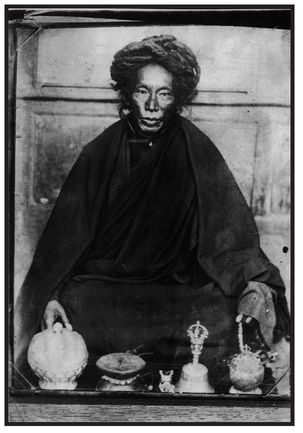
Tertn Sogyal Lerab Lingpa (1856-1926) was one of Tibets great mystics of the late nineteenth and early twentieth centuries, teacher of the XIII Dalai Lama, and protector of the Tibetan nation. This is the only known photo of him taken in 1913 near Rebkong in nor theast Tibet.
When I arrived in London for graduate school and began studying meditation with Sogyal Rinpoche, as well as the history and the works of the mystic Tertn Sogyal, I realized that here was an example of what I aspired toward. Tertn Sogyal possessed an endless reservoir of wisdom and strength to draw from while working in the volatile political realm of late nineteenth-century Tibet. This reservoir was something that I needed to tap into. So after I graduated, I decided to see where Tertn Sogyals saintly life had played outand deepen my own meditation practicein hallowed caves and hermitages high on the roof of the world and among Tibets sacred temples and shrines. I set up a base in Kathmandu as a freelance journalist to fund my travels and began making frequent trips to Tibet.


